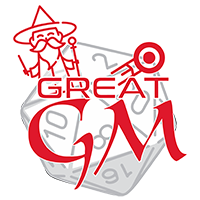Dragon Scales
It's easier to hunting the dragons - but not the adults! Hell's teeth, you wanna die? Go after nesting season and chop the unhatched eggs. Easy as drinking water.
Properties
Material Characteristics
Dragon scales can be found in any area that has a dragon population with beings in their molting stages. If none are in that stage, it is (sadly) common that thieves will either steal a dead dragon's scales or kill an older, weaker dragon to get scales that way.
For the most part dragon scales have a range of properties: color, size, thickness, and edge, however, there somethings that stay the same, such as shape. The shape of dragon scales are oval and thinnish, an adult dragon having a scale almost as long as a human's forearm. Older scales are more worn and will have rough, jagged edges as evidence of the dragon's survival (newborns will have softer, rounded scales that are still growing).
For the most part dragon scales have a range of properties: color, size, thickness, and edge, however, there somethings that stay the same, such as shape. The shape of dragon scales are oval and thinnish, an adult dragon having a scale almost as long as a human's forearm. Older scales are more worn and will have rough, jagged edges as evidence of the dragon's survival (newborns will have softer, rounded scales that are still growing).
Physical & Chemical Properties
The elemental properties of dragon scales depend on what type of dragon they come from. A fire dragon will always be warm to the touch; however, an ice dragon (who has rare scales since they resemble ice and are very hard to find) radiates cold. Most dragon scales can be damaged physically and elementally, though the element needs to not be the same as the dragon the scale came from.
Compounds
So far it's known that fire dragon scales can add a hot kick if they are ground and added to food, however, too much and human bodies will be wracked with violent sweats, shakes, and shivers, which means that not too many other people wish to test eating other dragon scales. It's unknown if other non-human beings have tried eating them.
Geology & Geography
For the most part, an elemental dragon can be found near their elements; the exception are fire dragons and ice dragons; they bring their heat/cold needs with them, but are happier in warmer/colder areas.
History & Usage
Discovery
Dragon scales were first discovered washed up on a beach, buried in the sand and dug out by a couple of children looking for ship wreckage. It was thought that these were fish scales for a species that would keep kraken appetites satisfied. Later on, when dragons began to attack the humans that blundered into their territories, it was seen that the dark blue scale with a greenish sheen to it was from a sea dragon.
Everyday use
Dragon scales tend to be used by warriors and dragons (sometimes the warrior is another dragon). This means that the power balance in battles can be changed just with a few select pieces of equipment.
Cultural Significance and Usage
So far, the only culture that has a significant use for dragon scales is the dragon culture.
Refinement
When used in armor, the scales are treated with a specific oiling recipe (which varies by families) and keep the scale ready to defend against both physical blows and elements.
Manufacturing & Products
Dragon scales are mostly used in armor, and it takes several scales to make a vest to fit over one being. Those that have long vests or tunics have proven themselves to be great warriors or beings with deep purses - sometimes both.
Hazards
The most hazardous thing with dragon scales is getting them from a dragon.
Distribution
Trade & Market
Warriors will sell scales to a middle person; most of them are looking for money to buy better weapons, healing potions, or to have a good few nights at the local inn.
The middle man will tell of how many and what age their dragons' scales are to armorers and blacksmiths as they are most in the know about
The middle man will tell of how many and what age their dragons' scales are to armorers and blacksmiths as they are most in the know about
Value
Varies
Rarity
Varies
Odor
slightly musty
Taste
dry & salty
Color
myriad
Density
Sinks like stone
Common State
Solid
Remove these ads. Join the Worldbuilders Guild









Comments